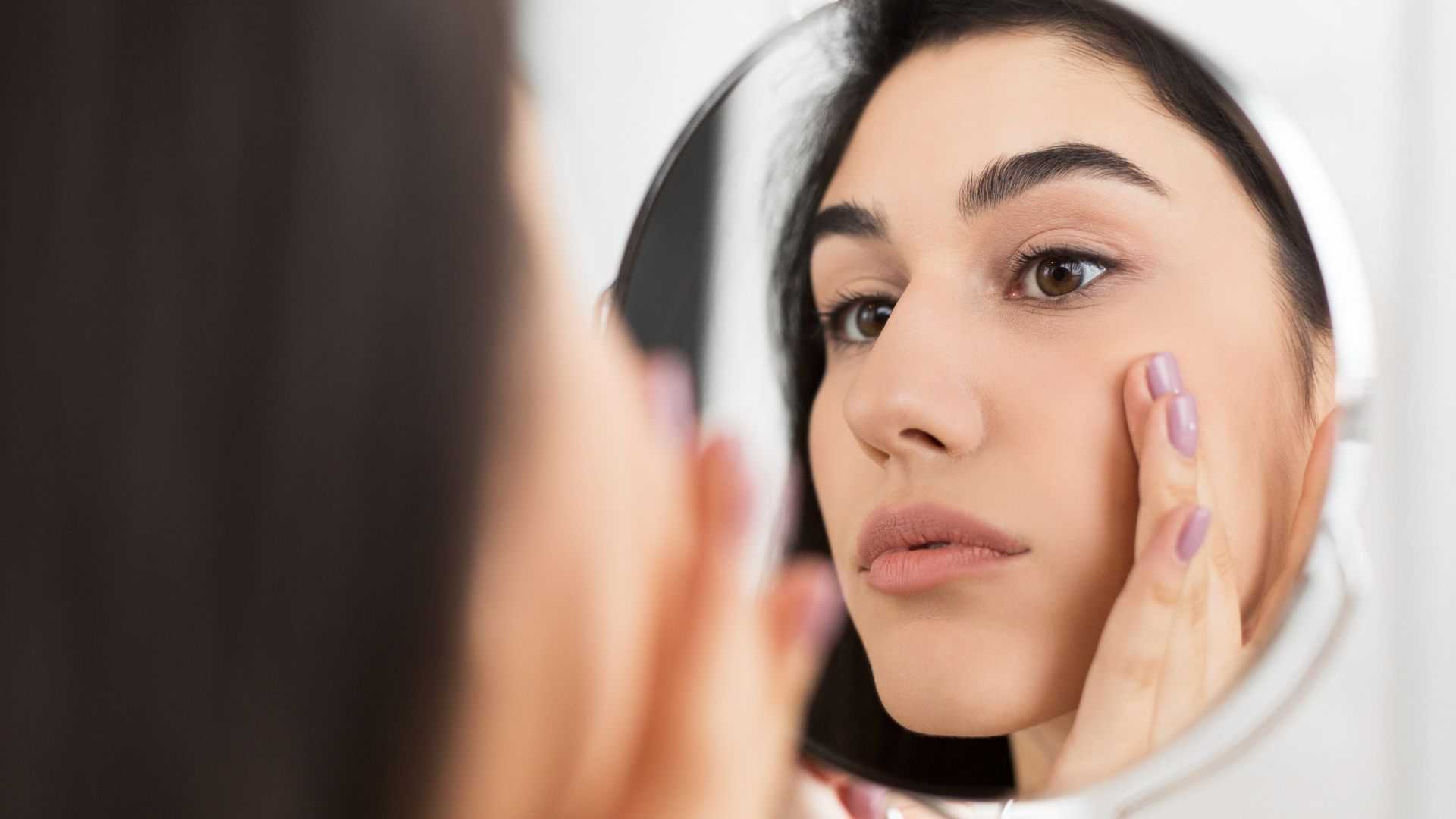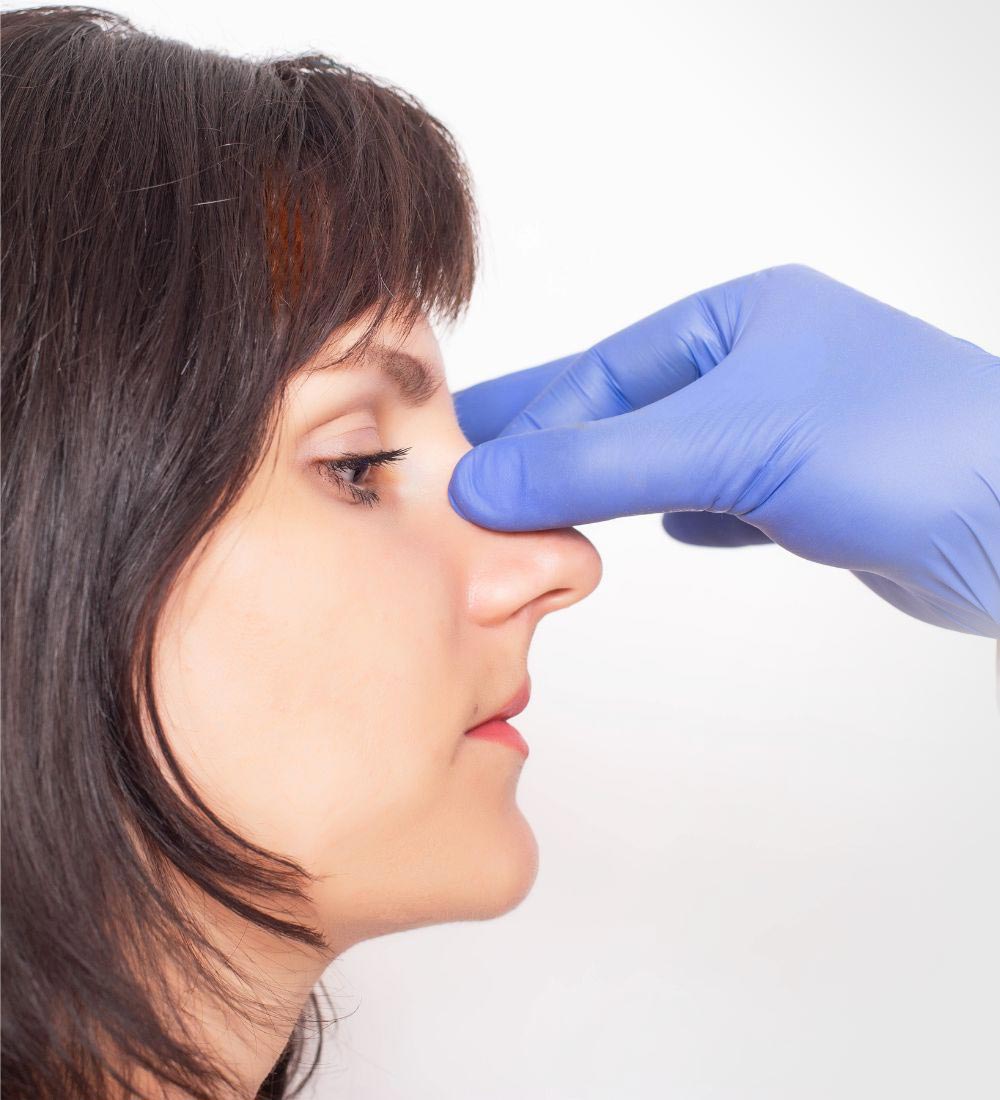A nose that complements your facial features can enhance your overall appearance. Rhinoplasty offers a precise, effective solution to reshape and refine your nose under the care of a highly experienced surgeon.

A misaligned nose can make you feel uncomfortable in social situations and affect your confidence, especially in close-up photos.
Makeup or non-surgical treatments can only mask the issue, offering no permanent solution and requiring constant touch-ups.
As you age, the structural issues with your nose may become more noticeable, affecting facial symmetry and making you feel dissatisfied with your appearance.
Dr. Sudhakar Prasad, with over 28 years of experience, specializes in rhinoplasty, delivering results that restore facial harmony while maintaining a natural look. His advanced techniques focus on reshaping the nose to suit your unique facial structure, ensuring that the outcome enhances your appearance without compromising functionality.
Dr. Prasad’s expertise guarantees that your rhinoplasty procedure is tailored to your specific needs, addressing concerns such as a prominent bump, uneven nostrils, or an asymmetrical tip. By combining his vast experience with cutting-edge technology, Dr. Prasad ensures minimal scarring, a smooth recovery, and results that blend seamlessly with your other features, giving you a more balanced and confident appearance.
Dr. Prasad’s rhinoplasty techniques reshape the nose to fit seamlessly with your facial features, ensuring a balanced and natural look that enhances your overall appearance.
Dr. Prasad’s approach to rhinoplasty ensures that your nose looks great from all angles, whether it’s in photos, everyday interactions, providing a refined, symmetrical look.
Through detailed facial analysis, Dr. Prasad’s rhinoplasty creates subtle yet effective changes, improving your nose’s proportions to harmonize with the rest of your face.
Dr. Prasad customizes each rhinoplasty procedure to restore facial symmetry, ensuring that your nose complements your facial features for a more youthful and attractive appearance.
Using advanced techniques, Dr. Prasad delivers natural-looking results with minimal downtime, so you can enjoy a refreshed appearance that lasts for years.
Dr. Prasad’s rhinoplasty procedures focus on precision and minimal scarring, ensuring that your results are both effective and discreet, with scars that fade over time.

Rhinoplasty, commonly known as a nose job, is a cosmetic surgery procedure designed to enhance the appearance and function of the nose. It involves reshaping the nasal structure, whether it’s reducing the size, refining the shape, or correcting any asymmetries.
Rhinoplasty can address both aesthetic concerns, such as a large or uneven nose, and functional issues, like difficulty breathing due to a deviated septum.
The rhinoplasty procedure is typically performed under general anesthesia or local anesthesia with sedation, depending on the complexity of the surgery. Dr. Sudhakar Prasad uses advanced techniques to reshape the nose, which may involve removing or adding cartilage and bone, or repositioning nasal structures to improve both form and function.
Dr. Prasad’s expertise ensures that the surgery is as minimally invasive as possible, with a focus on long-lasting, natural-looking results.
During your consultation, Dr. Prasad will thoroughly assess your facial features and discuss your aesthetic goals for rhinoplasty. He will also evaluate your nasal structure and any functional concerns, such as breathing difficulties. Based on this, he will recommend the most suitable approach to achieve your desired results.
As a leading rhinoplasty surgeon in Jubilee Hills, Hyderabad, Dr. Prasad’s consultation process is focused on ensuring that you are fully informed and comfortable with your treatment plan.
The recovery time after rhinoplasty can vary, but most patients can return to light activities within 1-2 weeks. Swelling and bruising may last for a few weeks, and it can take up to a year for the final results to fully settle.
Dr. Prasad provides clear post-operative care instructions to ensure a smooth recovery and optimal results. His expertise ensures that the healing process is as comfortable as possible, with minimal complications.
In some cases, rhinoplasty may be covered by insurance if it is performed to address functional issues such as a deviated septum or breathing difficulties.
Dr. Prasad will assess your specific condition and, if necessary, work with your insurance provider to determine coverage. It’s important to discuss your concerns during the consultation to explore all available options.
Yes, Dr. Sudhakar Prasad specializes in creating natural-looking results. His goal is to enhance your nose’s appearance in a way that complements the rest of your facial features.
Using advanced techniques and a personalized approach, Dr. Prasad ensures that your rhinoplasty results look balanced and harmonious, providing a subtle yet noticeable improvement.
Ideal candidates for rhinoplasty are individuals who are in good overall health and have realistic expectations about the procedure. If you are concerned about the appearance of your nose or have functional issues such as difficulty breathing, rhinoplasty may be an appropriate option for you.
During your consultation with Dr. Prasad, he will assess your needs and determine if rhinoplasty is the right solution for you.
The results of rhinoplasty are generally permanent, although the nose may continue to change slightly with age. Dr. Prasad’s techniques are designed to create lasting results that are both aesthetically pleasing and functional.
His expertise ensures that your nose maintains its improved appearance over time, with minimal need for future touch-ups.
Rhinoplasty is performed under anesthesia, so you will not feel pain during the procedure. After the surgery, some discomfort, swelling, and bruising are common, but these symptoms are typically manageable with prescribed pain medication.
Dr. Prasad ensures that his patients experience minimal pain and discomfort during the recovery process by providing detailed aftercare instructions and support.
We understand that cost is a key consideration when planning for rhinoplasty. While the price of rhinoplasty can vary based on several factors, it’s important to know that you’re investing in a long-term solution to enhance your facial harmony and improve breathing function.
Dr. Sudhakar Prasad’s clinic offers transparent pricing and personalized consultations to help you understand the costs involved, ensuring that you are well-informed before making any decisions.

Reshaping the nose for aesthetic improvements such as size reduction, reshaping, or correcting asymmetry.
Starting from ₹60,000 - ₹1,50,000
Correcting breathing problems caused by structural issues like a deviated septum or nasal obstructions.
Starting from ₹50,000 - ₹1,20,000
A secondary surgery to correct previous rhinoplasty results or address complications from earlier procedures.
Starting from ₹80,000 - ₹2,00,000
Tailored rhinoplasty techniques to preserve or enhance ethnic features while improving the nose’s appearance.
Starting from ₹75,000 - ₹1,50,000
Focused on reshaping or refining the tip of the nose for better proportion and definition.
Starting from ₹50,000 - ₹1,00,000
Reducing the width of the nostrils to create a more balanced appearance in relation to the rest of the face.
Starting from ₹40,000 - ₹90,000
Inserting implants to improve the shape and size of the nose, especially for cases requiring structural enhancement.
Starting from ₹50,000 - ₹1,00,000

When it comes to liposuction in Hyderabad, experience is everything—and Dr. Sudhakar Prasad has over 28 years of expertise in performing cosmetic and plastic surgeries with precision.
From shaping your body to enhancing your natural contours, his deep understanding of the human body makes him one of the most trusted surgeons in Hyderabad. Dr. Prasad is renowned for his ability to create natural-looking results with minimal downtime, ensuring you’re back on your feet—and looking your best—faster than you thought possible.
As the President of the Indian Society for Microsurgery and a member of the Asia Pacific Cranio-Facial Association, Dr. Sudhakar Prasad brings a wealth of expertise to every procedure.
With 1000s of happy patients, Dr. Sudhakar Prasad has successfully handled a wide range of complex cases, earning trust and delivering outstanding results in the fields of plastic, reconstructive, and microsurgery.
Discover how Dr. Sudhakar Prasad has transformed lives with personalized care and exceptional results through the experiences of his satisfied patients.



Crisalix is a cutting-edge 3D imaging technology that allows you to visualize your post-surgery results in a realistic, interactive 3D model. Using your own photos, Crisalix creates a virtual model of your body and simulates the effects of the procedure.
You don’t just hope for the best — You get to see it.

Rhinoplasty is often surrounded by myths and misconceptions, but Dr. Prasad believes in educating his patients and addressing their concerns directly. He understands that the decision to undergo rhinoplasty is deeply personal, and he strives to create a safe, comfortable environment where you can openly discuss your worries.
By addressing common concerns and providing transparent information, Dr. Prasad helps you make an informed choice that aligns with your goals.
It’s a valid concern. Many people worry that rhinoplasty will result in an unnatural or exaggerated appearance. Dr. Prasad’s approach is focused on subtle, balanced changes that enhance your natural features.
By carefully analyzing your facial structure, he ensures that the results are in harmony with the rest of your face, avoiding any “overdone” look.
Cost is often a key concern for patients considering rhinoplasty. The price of the procedure can vary depending on the complexity of the surgery and the type of technique used.
Dr. Prasad offers transparent pricing during your consultation, ensuring that you understand the breakdown of the costs involved. He also provides financing options to help make the procedure more accessible.
It’s important to have realistic expectations when undergoing rhinoplasty. While it’s generally not possible to reverse the procedure, Dr. Prasad takes great care to ensure that you are satisfied with the results.
He works closely with each patient to understand their vision and provides a comprehensive consultation to discuss all options before surgery.
Rhinoplasty recovery time varies depending on the individual, but most patients can expect to return to work within 7-10 days. Swelling and bruising may persist for a few weeks, and it can take up to a year for the final results to fully settle.
Dr. Prasad provides detailed post-operative care instructions to help you recover quickly and safely.
While rhinoplasty is a generally safe procedure, as with any surgery, there are risks involved. These can include infection, bleeding, or dissatisfaction with the results.
Dr. Prasad takes every precaution to minimize these risks, including thorough pre-operative assessments and post-surgical care. His extensive experience ensures that complications are rare, and he will guide you through every step to ensure a smooth recovery.
If you have a deviated septum or other breathing issues, rhinoplasty can often help improve airflow and breathing function. Dr. Prasad combines cosmetic and functional procedures, ensuring that your nose looks great and functions properly.
He will discuss your specific concerns during your consultation and tailor the surgery to meet both your aesthetic and functional needs.
One of the most common fears is that rhinoplasty will drastically change your appearance. Dr. Prasad’s goal is to enhance your natural features, not to drastically alter them.
He focuses on making subtle adjustments that improve facial balance and symmetry, ensuring that you look like yourself, just more refined and proportionate.
Take the first step towards a more balanced and confident appearance with Dr. Sudhakar Prasad, one of India’s leading cosmetic surgeons.
Contact us today to schedule your consultation and learn how we can bring your vision to life.